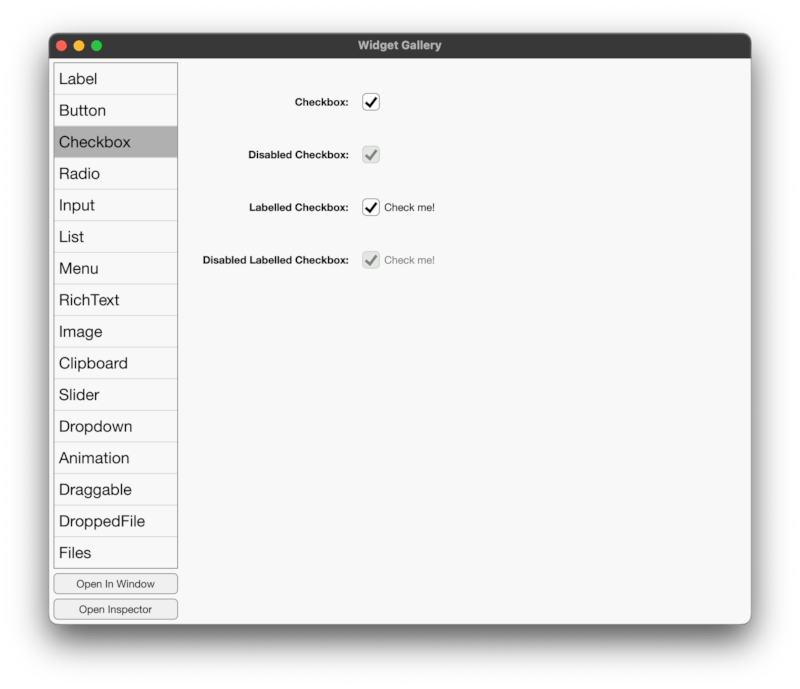3 unstable releases
| 0.2.0 | Nov 14, 2024 |
|---|---|
| 0.1.1 | Jan 13, 2024 |
| 0.1.0 | Nov 21, 2023 |
#204 in GUI
320 downloads per month
Used in 7 crates
2MB
33K
SLoC
The project is still maturing. We will make occasional breaking changes and add missing features on our way to v1.
Quickstart
use floem::prelude::*;
fn main() {
floem::launch(counter_view);
}
fn counter_view() -> impl IntoView {
let mut counter = RwSignal::new(0);
h_stack((
button("Increment").action(move || counter += 1),
label(move || format!("Value: {counter}")),
button("Decrement").action(move || counter -= 1),
))
.style(|s| s.size_full().items_center().justify_center().gap(10))
}

Features
Inspired by Xilem, Leptos and rui, Floem aims to be a high performance declarative UI library with a highly ergonomic API.
- Cross-platform: Floem supports Windows, macOS and Linux with rendering using wgpu. In case a GPU is unavailable, a CPU renderer powered by tiny-skia will be used.
- Fine-grained reactivity: The entire library is built around reactive primitives inspired by leptos_reactive. The reactive "signals" allow you to keep your UI up-to-date with minimal effort, all while maintaining very high performance.
- Performance: The view tree is constructed only once, safeguarding you from accidentally creating a bottleneck in a view generation function that slows down your entire application. Floem also provides tools to help you write efficient UI code, such as a virtual list.
- Flexbox layout: Using Taffy, the library provides the Flexbox and Grid layout systems, which can be applied to any View node.
- Customizable widgets: Widgets are highly customizable. You can customize both the appearance and behavior of widgets using the styling API, which supports theming with classes. You can also install third-party themes.
- Transitions and Animations: Floem supports both transitions and animations. Transitions, like css transitions, can animate any property that can be interpolated and can be applied alongside other styles, including in classes. Floem also supports full keyframe animations that build on the ergonomics of the style system. In both transitions and animations, Floem supports easing with spring functions.
- Element inspector: Inspired by your browser's developer tools, Floem provides a diagnostic tool to debug your layout.
To sample Floem's capabilities, check out the repo and run the widget gallery example with cargo.

To help you master Floem, we provide documentation and code examples.
Contributions
Lapdev, developed by the Lapce team, is a cloud dev env service similar to GitHub Codespaces. By clicking the button above, you'll be taken to a fully set up Floem dev env where you can browse the code and start developing. All dependencies are pre-installed, so you can get straight to code.
Contributions welcome! If you'd like to improve how Floem works and fix things, feel free to open an issue or submit a PR. If you'd like a conversation with Floem devs, you can join in the #floem channel on this Discord.
Dependencies
~26–70MB
~1M SLoC
